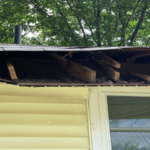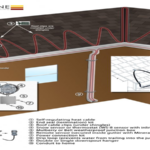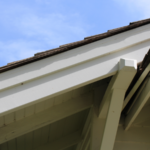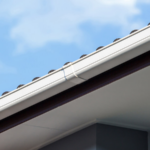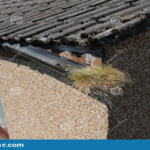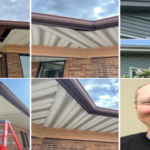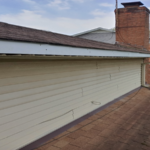The most common problem with gutters is that they can become clogged with debris, such as leaves and twigs. If the gutters are not cleaned on a regular basis, the weight of the debris can cause the gutters to sag or even collapse.
What can go wrong with gutters?
There are a few things that can go wrong with gutters. One is that they can get clogged with leaves and debris, which can cause water to back up and overflow. This can damage your gutters, your home’s foundation, and your landscaping.
Another problem that can occur is that gutters can pull away from your home’s fascia board, which is the board that they’re attached to. This can happen if the gutters aren’t installed properly, or if the weight of the water and debris in them is too much for the nails or screws that are holding them in place. This can cause water to leak into your home, which can damage your walls, ceilings, and floors.
Finally, gutters can also become worn and damaged over time, which can cause them to leak or even collapse. This is why it’s important to have them inspected and cleaned on a regular basis, and to replace them when they start to show signs of wear.
What is the average life of gutters?
The average life of a gutter is about 20 to 30 years. However, this does depend on the material that the gutter is made out of. For example, a metal gutter will last longer than a plastic one. Additionally, the way the gutter is installed also contributes to its lifespan. If the gutter is properly installed and maintained, it will last longer.
How often should gutters be replaced?
Most experts agree that gutters should be replaced every 20 years. However, if you live in an area with a lot of trees, you may need to replace your gutters more often. Gutters can also be damaged by severe weather, so if you live in an area that is prone to severe weather, you may need to replace your gutters more often.
Is it better to have gutter guards or not?
Ultimately, the decision of whether or not to install gutter guards comes down to a balance of cost, convenience, and peace of mind. If you’re willing to spend the money and you don’t mind occasional cleaning, gutter guards can be a great way to protect your home.
What should you not do when installing gutters?
- Don’t use gutters that are too small for your roof. This can cause overflow and lead to water damage.
- Don’t use gutters that are too big for your roof. This can make the gutters look disproportionate and can also cause issues with installation.
- Don’t install gutters without first cleaning the roof and removing all debris. This can clog the gutters and cause problems down the line.
- Don’t forget to install gutter guards. These will help keep leaves and debris out of the gutters, making them easier to maintain.
- Don’t try to install gutters yourself if you’re not comfortable doing so. Gutters can be tricky to install, and it’s best to leave it to the professionals.
What happens if gutters not cleaned?
If gutters are not cleaned, then rainwater will not be properly diverted away from the home. This can lead to water damage of the home’s foundation, landscaping, and even the home’s interior. In addition, standing water in gutters can attract mosquitoes and other pests, which can be a health hazard.
How can I make my gutters flow better?
- Check your gutters for any debris that may be causing a blockage. Leaves, twigs, and dirt can all build up and cause your gutters to clog.
- Make sure that your gutters are properly pitched. If they are not, water will not flow properly and can cause overflows.
- Clean your gutters regularly. This will help to prevent any build-up of debris and will keep them flowing smoothly.
- Install gutter guards. These can help to keep leaves and other debris from getting into your gutters and causing a blockage.
- If you still have problems with your gutters overflowing, you may need to install a gutter drain system. This will help to catch any water that overflows and redirect it away from your home.
How do I test my gutters?
- To test your gutters, start by pouring a small amount of water into the gutter.
- If the water drains properly, then your gutters are working properly.
- However, if the water does not drain properly, then there may be a problem with your gutters.
- To further test your gutters, you can try flushing them with a hose.
- If the water still does not drain properly, then you may need to have your gutters cleaned or repaired.
How do you test rain gutters?
There are a few ways that you can test your rain gutters to see if they are working properly. One way is to simply pour a bucket of water into the gutter and see if it flows through the downspout. Another way is to look inside the gutters and downspouts after a rainstorm to see if there is any standing water. If there is, then your gutters are not draining properly. Finally, you can measure the amount of water that flows out of the downspout during a rainstorm to see if it is sufficient.
Conclusion
The most common problem with gutters is that they get clogged with leaves and other debris. This can cause water to back up and overflow, which can damage your home’s foundation.


